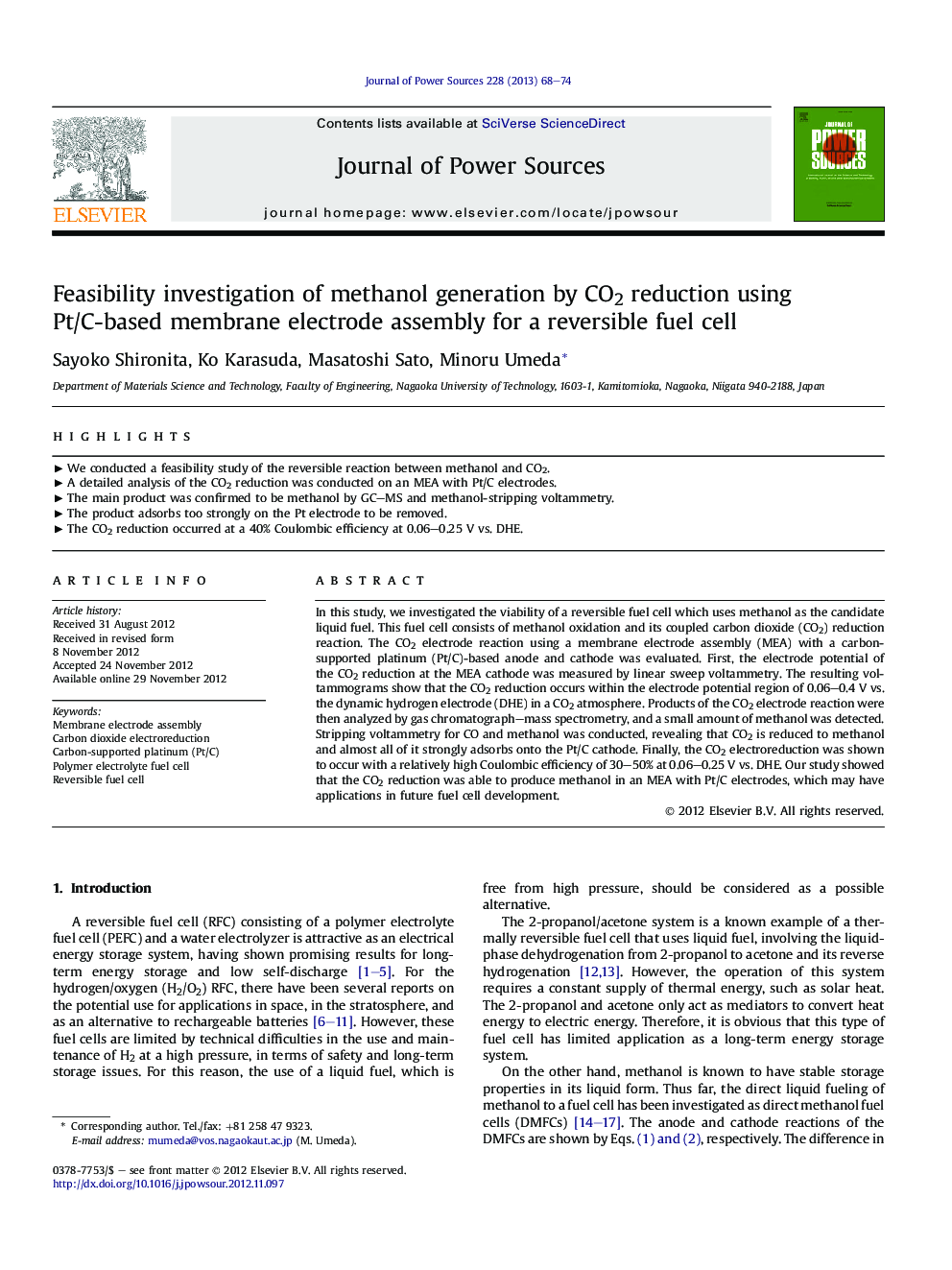| Article ID | Journal | Published Year | Pages | File Type |
|---|---|---|---|---|
| 1288185 | Journal of Power Sources | 2013 | 7 Pages |
In this study, we investigated the viability of a reversible fuel cell which uses methanol as the candidate liquid fuel. This fuel cell consists of methanol oxidation and its coupled carbon dioxide (CO2) reduction reaction. The CO2 electrode reaction using a membrane electrode assembly (MEA) with a carbon-supported platinum (Pt/C)-based anode and cathode was evaluated. First, the electrode potential of the CO2 reduction at the MEA cathode was measured by linear sweep voltammetry. The resulting voltammograms show that the CO2 reduction occurs within the electrode potential region of 0.06–0.4 V vs. the dynamic hydrogen electrode (DHE) in a CO2 atmosphere. Products of the CO2 electrode reaction were then analyzed by gas chromatograph–mass spectrometry, and a small amount of methanol was detected. Stripping voltammetry for CO and methanol was conducted, revealing that CO2 is reduced to methanol and almost all of it strongly adsorbs onto the Pt/C cathode. Finally, the CO2 electroreduction was shown to occur with a relatively high Coulombic efficiency of 30–50% at 0.06–0.25 V vs. DHE. Our study showed that the CO2 reduction was able to produce methanol in an MEA with Pt/C electrodes, which may have applications in future fuel cell development.
► We conducted a feasibility study of the reversible reaction between methanol and CO2. ► A detailed analysis of the CO2 reduction was conducted on an MEA with Pt/C electrodes. ► The main product was confirmed to be methanol by GC–MS and methanol-stripping voltammetry. ► The product adsorbs too strongly on the Pt electrode to be removed. ► The CO2 reduction occurred at a 40% Coulombic efficiency at 0.06–0.25 V vs. DHE.
